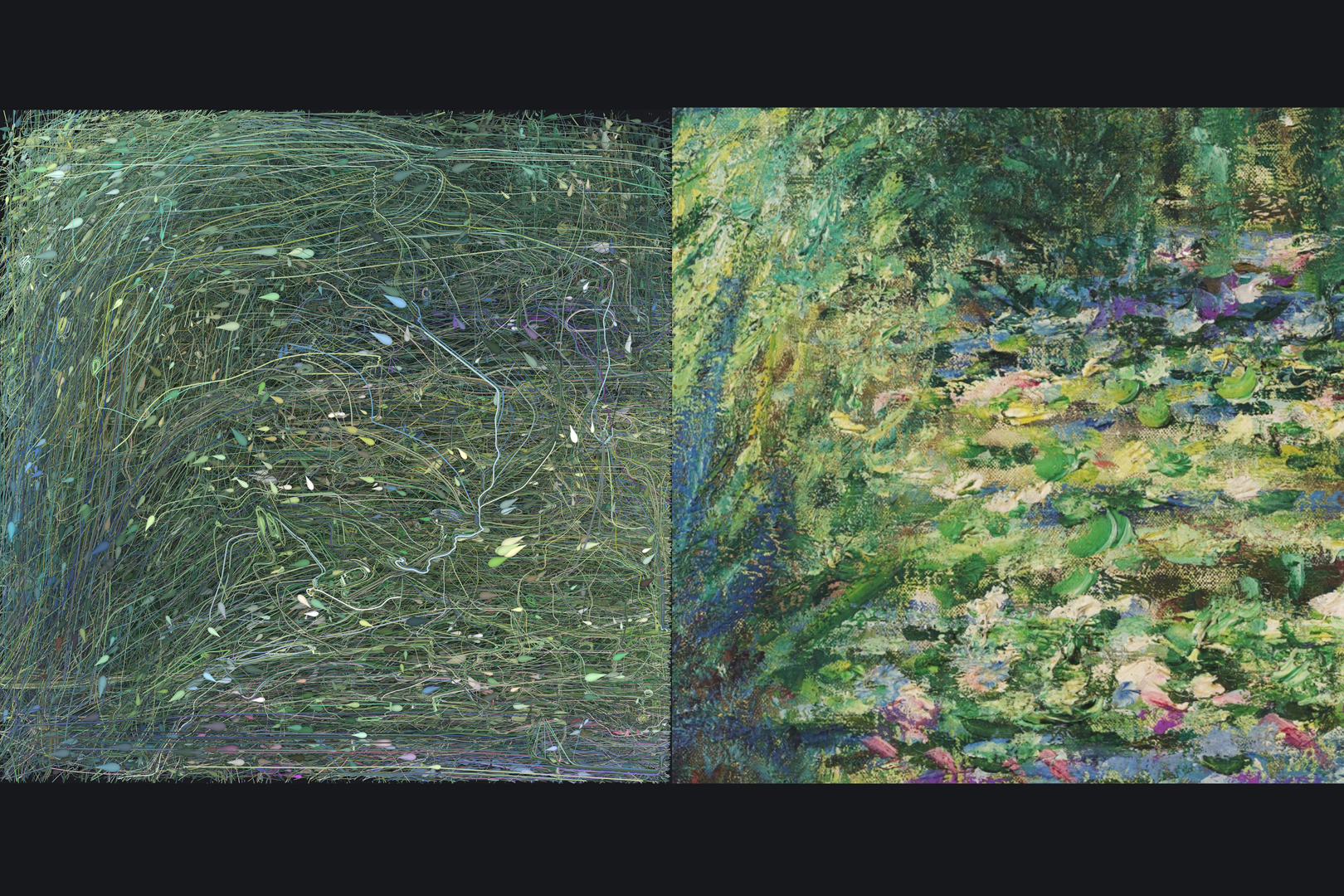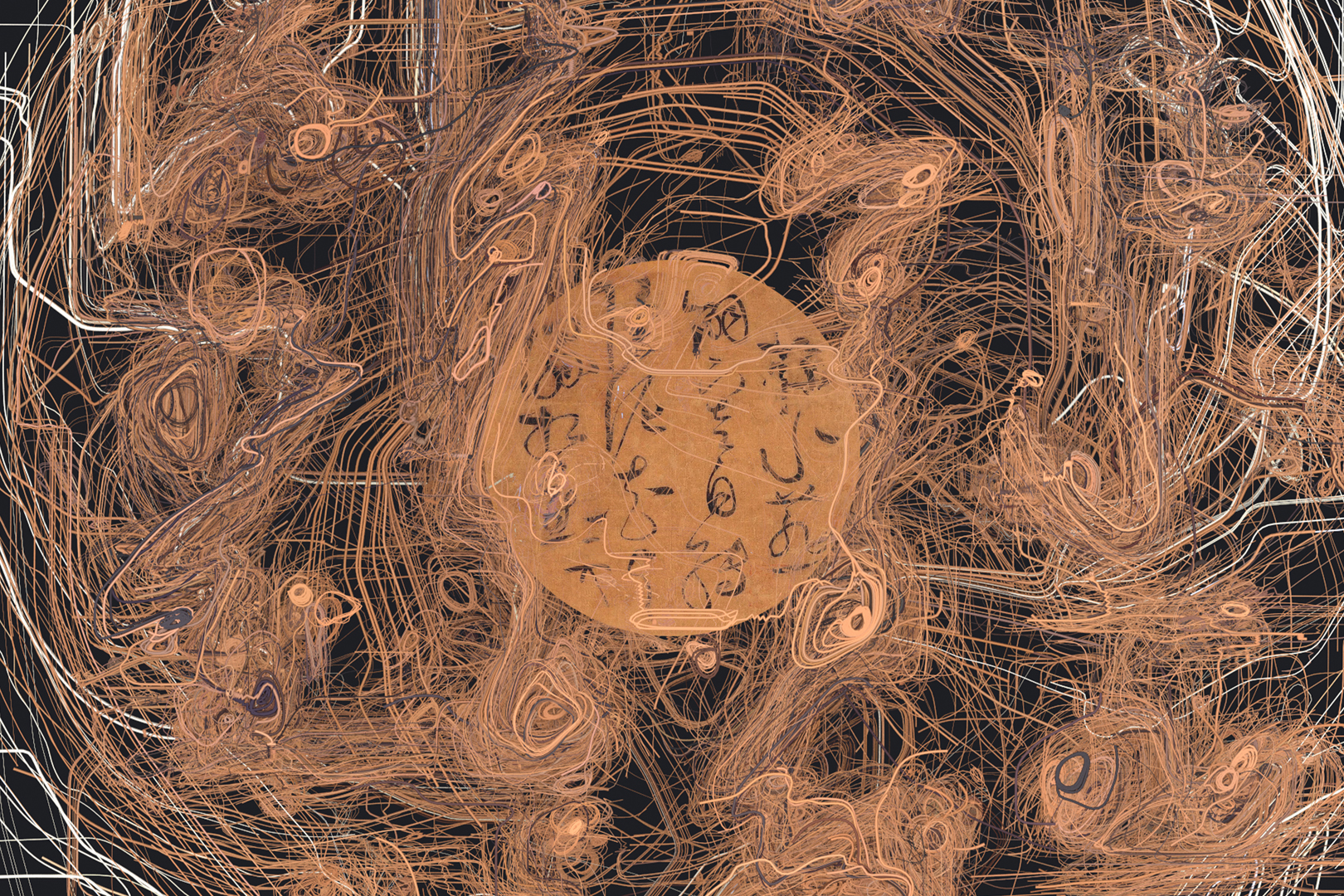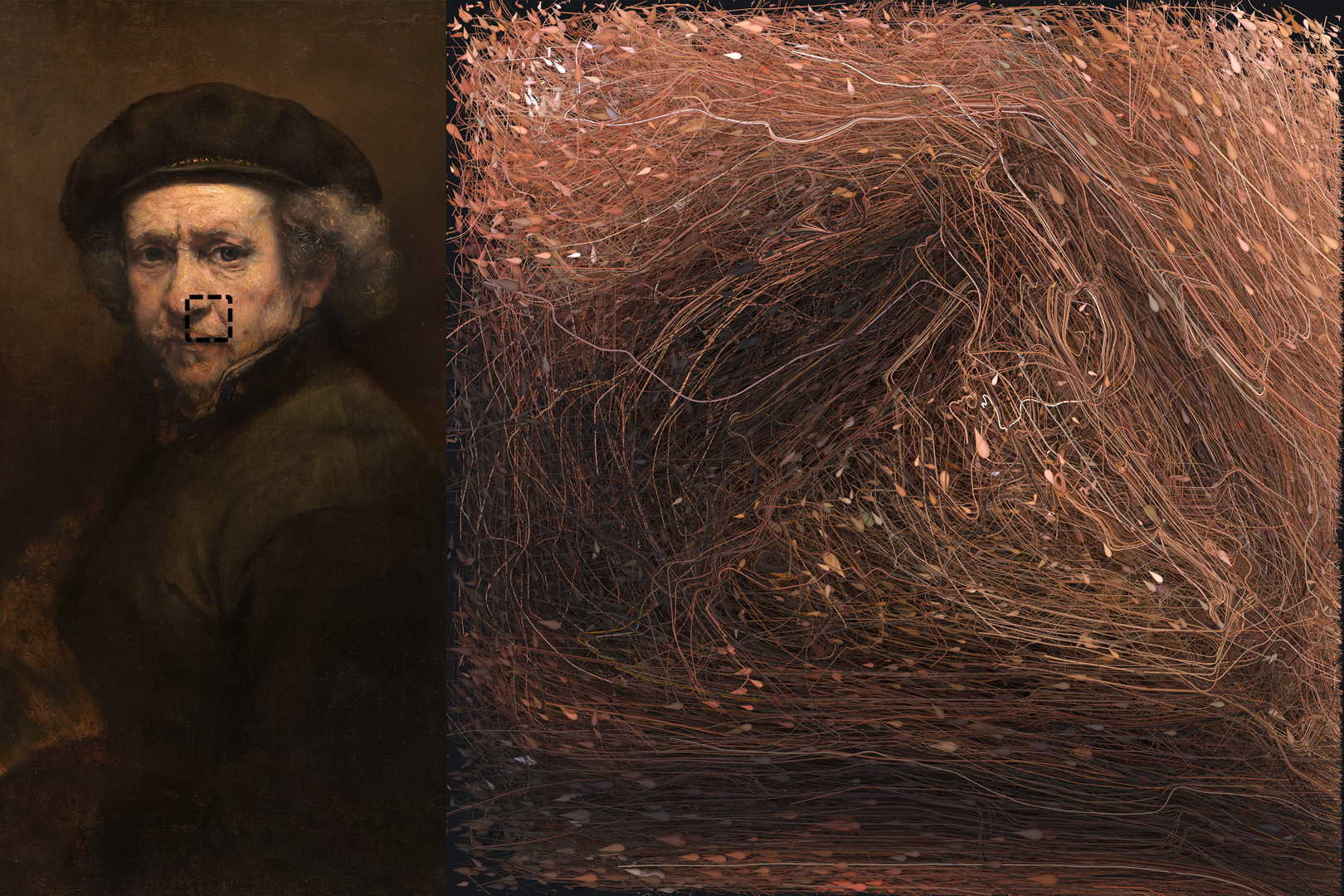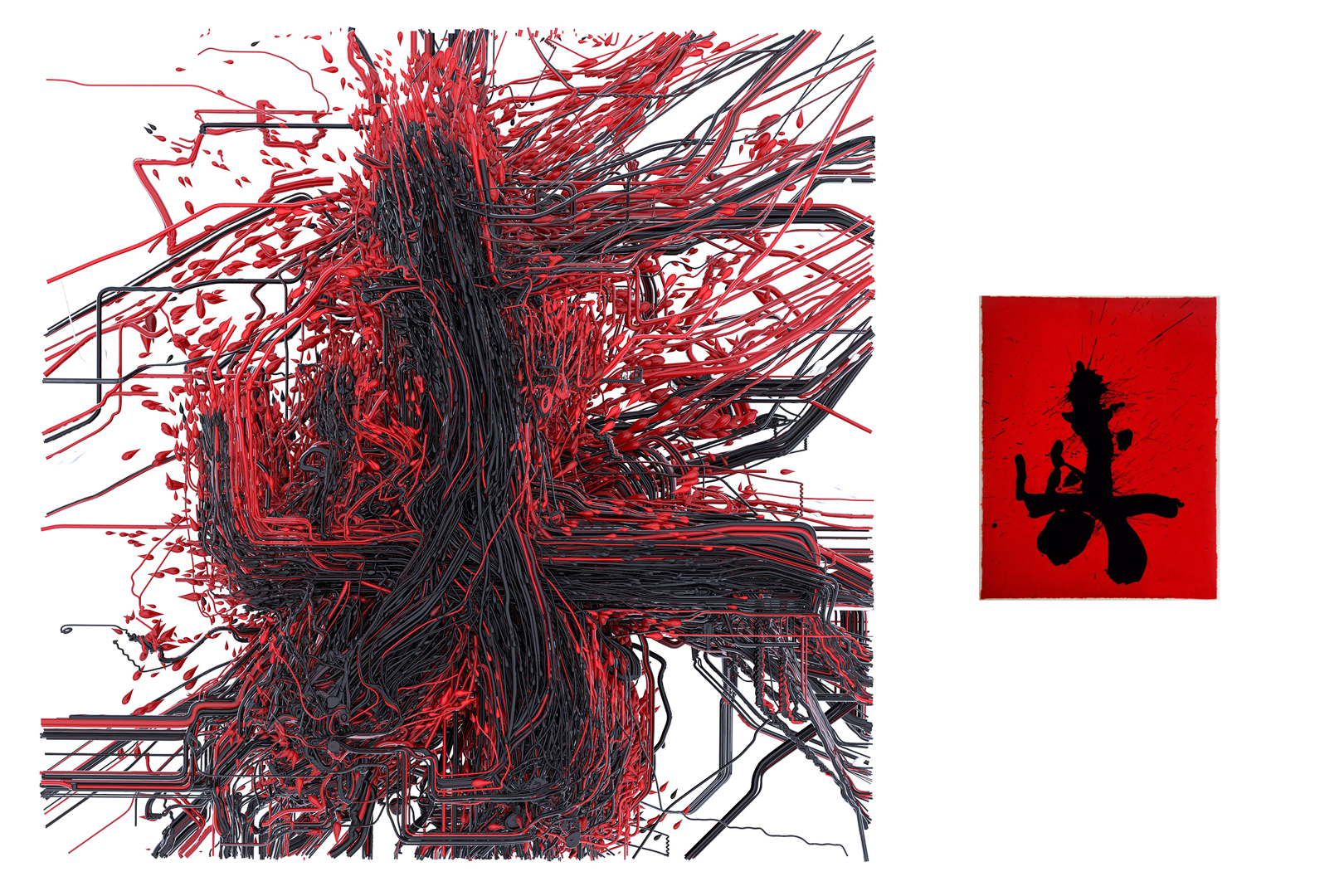Ruimin Lyu, Tianqin Zhang, Zhaolin Yuan: Visualization of Imaginary Stroke Movement in Painting and Calligraphy
Artist(s):
Title:
- Visualization of Imaginary Stroke Movement in Painting and Calligraphy
Exhibition:
- SIGGRAPH 2021: Art with an Impact
-
More artworks from SIGGRAPH 2021:


Category:
Artist Statement:
Beholders can feel the imaginary movement from the artist’s brushstrokes in visual artworks. This psychological phenomenon has been recorded in the world’s art literature, and its physiological basis has been found by neuroaesthetics researchers. However, past practice and research have neither tried to fetch the “data” of the imaginary stroke movement from the brain nor re-created artworks in new forms based on it. By drawing lessons from “copying,” a common practice in art skill training, we develop two interactive “painting” applications which enable the user to draw their perceived stroke movement on reference artworks.
We have chosen masterpieces from over 20 famous artists from both western and eastern art history as the references and invited over 260 testers to “draw” their imaginary stroke movement over the selected pieces. Our two applications acquire two types of data, describing velocity sense and trace sense, which are “dual” descriptions of the so-called imaginary stroke movement. Velocity sense is the subjective velocity that the beholder feels from the brushstroke at each position of the reference pieces, which is a local and instantaneous description of the so-called imaginary stroke movement and is modeled as stochastic velocity fields based on the collected data. Trace sense is the beholder’s subjective trajectories along the velocity suggested by the brushstrokes, which is a widespread, cumulative description of imaginary stroke movement, and is modeled as stochastic processes based on the collected data.
We have designed various visualizations of the data, which mainly differ in two quality indicators: fidelity and aesthetics. Fidelity prioritizes the presentation of the statistical characteristics, while aesthetics prioritizes the artistic re-creation based on the data. Our applications show visualizations of the imaginary stroke movement of the selected masterpieces. These visualizations can either been seen as a quantitative method to study the artistic style of visual artworks, or as a way to create new media artworks based on past masterpieces.








